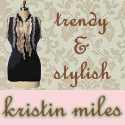Guest post by Diana Miller.
If the experts are right, many of us are walking around with bras that don’t fit. From strapless bras that threaten to fall down to crossback bras that leave red skin welts across the back and shoulders, our bras are causing us pain instead of support. Unfortunately, finding a bra that fits correctly is not easy, but there are a few tips that can help you fit into the next bra you choose to buy.

1. The best way to find your proper bra size is to get fitted by a professional. Many department stores and specialty undergarment stores will employ a fitter whose job it is to find your correct cup and band size, and then match you up to the bras which will best support you. If you are embarrassed, don’t be. These fitters are trained professionals who have seen all shapes and sizes of breasts. They are not there to critique your breasts; rather they are there to find you a bra that will complement your body and style. If you like a particular style of bra, such as the popular crossback bra, be sure to mention it to your fitter so that she knows what type of bra to be on the lookout for.
2. Whether you have a professional fitting done or you decide to do it yourself you will need to measure both band and cup size to get an idea of which size bra will fit you. With a measuring tape, measure your band size by loosely wrapping the tape around your ribcage directly underneath your breast. Keep the measuring tape loose enough to be comfortable but snug enough to stay up. You also want to be sure and keep the tape straight across the back as you measure. The number you come up with will be your band size. Next, to find your cup size, you need to wrap the tape around the fullest part of your breast, while keeping the back straight. Subtract your band size from this measurement to get your cup size. A difference of one inch is an A cup, two inches a B cup, and so on.
3. No matter what you ended up measuring, this is really just a reference point to start off with. Because breasts are all shaped differently, two women who measured at a 34B may very well end up with different size crossback bras at the store. Some bras run a on the large side, while others will feel tight no matter what the band size claims. Grab different sizes of the same style so you can start to get a feel for the brand’s general sizing. This is where the help of a professional can help. Because they often know the brands well, they will be able to recommend sizes and styles that will best suit your body.
4. Remember when you are at the store to rigorously test the bra you are trying on. This includes bending over, jumping up and down, putting your arms up, twisting your body around both sides, and sliding a pair of fingers underneath the bands and straps. You want to get a feel for what the bra will feel like outside of the store. In the real world you will be making many of the same movements every day. If your bra pinches, feels tight, hurts, or is in any way uncomfortable then you should try on a different size or style. If you don’t want to wear it in the store you won’t wear it at home, no matter how pretty it looks on.
Diana Miller is a writer for Damart, a premier British company offering woman’s clothing, crossback bras and other ladies fashions.



